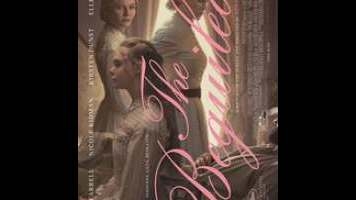
Beneath the incessant chirp of crickets, explosions rumble like distant thunder. Somewhere nearby, cannons are firing away. For the girls and the women of Sofia Coppola’s elegantly spare, psychosexual Civil War drama The Beguiled, this daily broadcast from the front lines—muffled by the foliage, accompanying the occasional fingers of smoke reaching skyward above the tree line—is too close and too far for comfort. Hearing it reminds them of the death and danger lurking just out of sight, but also of the intense isolation of life in the foggy, mossy backwoods of wartime Virginia, where the Farnsworth Seminary For Young Ladies sits as quietly as a headstone. It is 1864. The combat rages on. The men have all gone to die. If purgatory has a soundtrack, it’s just the music of a battlefield hell, echoing across nature the way heavy bass bleeds through thin walls.
The hook of The Beguiled, which unfolds on the edges of a forest sweltering enough to be called a jungle, is that it applies the sensual sensibilities of Lost In Translation and The Virgin Suicides to a premise straight out of a lurid, retrograde, early-’70s Clint Eastwood vehicle. Directed by Don Siegel, the same year the two would launch the Dirty Harry series, that movie was a B genre curiosity with a porno setup: a gaggle of repressed, sheltered Southern belles seduced by the manliest Yankee of them all, who then pays a dear price for toying with their affections. Officially, Coppola has returned to the 1966 source novel by Thomas Cullinan, as opposed to “remaking” Siegel’s version. But a few pointed omissions aside, the plot hasn’t changed much between adaptations. What this Beguiled has done is deepen the material’s implicit wellsprings of loneliness and longing, mitigating some of the inherent sexism by attempting to genuinely grapple with the desires of its cooped-up characters. It’s “tasteful” hothouse pulp, if such a thing is possible.
Skipping through the sun-streaked woods, picking mushrooms along the way, young Amy (Southpaw’s Oona Laurence) stumbles upon a wounded Union soldier, Colonel John McBurney (Colin Farrell), propped against a tree and nursing a limb filthy with shrapnel. It’s with what they all insist is pure Christian altruism that the remaining occupants of the school—some students, some teachers, all female—agree to shelter the soldier, tending to his injuries while keeping him hidden, at least temporarily, from the Confederate troops that would haul him off to the gallows. But the days are long and nights lonely within this Southern Gothic sanctuary, and it isn’t long before everyone, up to and including stern headmaster Martha Farnsworth (Nicole Kidman), begins to vie for the attention of the enemy from the other side, conveniently laid up with a bum leg just down the hall from their bedrooms.
Eastwood’s McBurney was a barrel-chested brute, a near-parody of musky masculinity. There’s something less outsized, more deceptively polite, about the smolder Farrell brings to the part. Rocking his native brogue, the actor isn’t so much a fox in the henhouse as a snake in the grass; his McBurney modulates his charisma for each of his marks, ensuring his survival by identifying and exploiting their individual needs. In a way, that’s what Coppola has done, too: Her script, skeletal in incident, carefully lays out vulnerabilities, allowing a superb cast of actresses to create a spectrum of desire. For Mrs. Farnsworth, who Kidman plays as a crumbling statue of prim-and-proper Southern ladyhood (cracks slowly forming in her suspicion and resolve), McBurney represents the domestic stability the war has stolen from her. For teenage Alicia (Elle Fanning), flush with hormonal hunger in her prison of seclusion, the appeal of the “blue-belly” under their care is more primal. And for shy schoolteacher Edwina (Kirsten Dunst), McBurney is nothing less than a promise of escape. Dunst, in her third starring role for the director, supplies a nagging, naked desperation—a melancholy wanting that blows through this recycled erotic scenario like a gust of cold air.
Coppola has made a career constructing gilded cages for restless heroines, from the suburban captivity Dunst endured in The Virgin Suicides to the hotel-room faux-childhood of Fanning’s Somewhere scion. With The Beguiled, she’s chipped away almost everything that doesn’t gel with that preoccupation—the sordid intimations of incest, the taboo-teasing kiss McBurney plants on preteen Amy at the start of Siegel’s film, even the horror of the plantation system. (“The slaves left,” someone flatly announces early into the movie, writing out the character of Hallie, integral to both the novel and the earlier movie, with a single line of dialogue.) Thankfully, a strain of dark comedy survives: As McBurney intensifies his dangerous game of manipulation, trying to play the multiple infatuations he’s provoked to his advantage, candlelight dinners with the stranger from the North transform into duels of innuendo, Coppola’s dialogue dripping with tension and double entendre.
Something has to give, and eventually it does, plummeting the characters into thriller territory. Of course, Siegel’s movie did the same. There are hints of a deeper drama here about rationalization—the way our brains justify the decisions made by our hearts (and other organs)—but that’s all reading between the lines of the film’s seesawing power dynamic. The Beguiled is, well, beguiling enough to make one wish Coppola had made something truly revisionist out of it; rather than radically reconceive the text, she just strips it down to an elemental 94 minutes—and the ending, mostly unaltered, seems to arrive too abruptly, extinguishing the simmering conflict. Still, The Beguiled’s vision of an almost mythically primitive America, lit by rays of sunshine and the dancing glow of candlelight, is never less than transporting; losing the anachronisms that defined her effervescent Marie Antoinette, Coppola immerses us in a world of verdant outdoor beauty, hushed indoor quiet, and dutiful routine. It’s a nice place to visit, but we can see in the yearning glances of the women—forgotten behind the gates of their near-deserted manor—that living there would be another matter entirely.